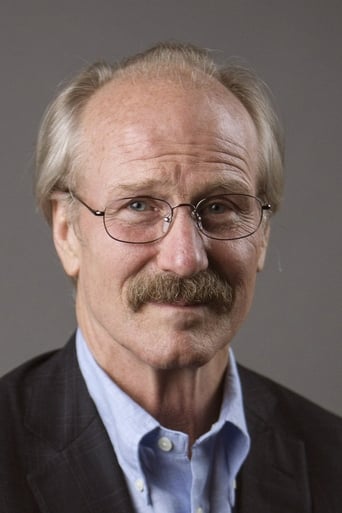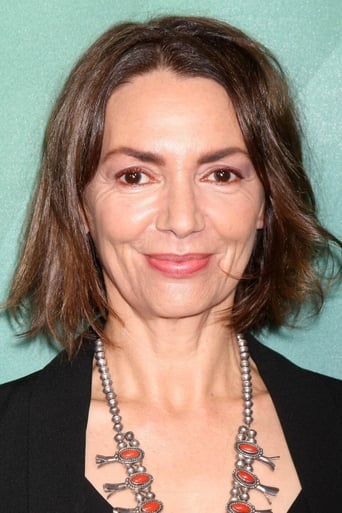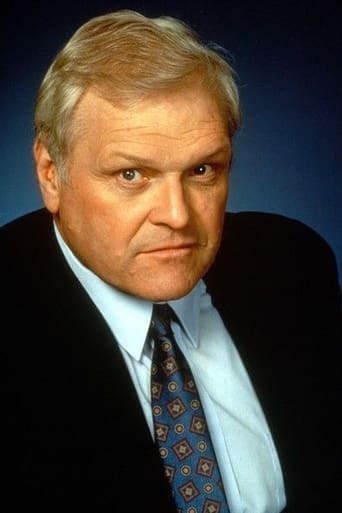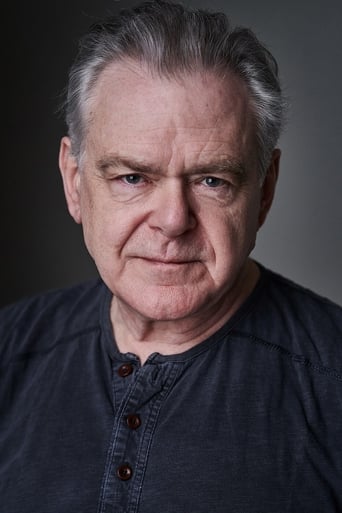Solemplex
To me, this movie is perfection.
UnowPriceless
hyped garbage
Crwthod
A lot more amusing than I thought it would be.
Robert Joyner
The plot isn't so bad, but the pace of storytelling is too slow which makes people bored. Certain moments are so obvious and unnecessary for the main plot. I would've fast-forwarded those moments if it was an online streaming. The ending looks like implying a sequel, not sure if this movie will get one
safarigirlinasia
I stumbled across The Challenger Disaster late last night while watching Discovery. I was drawn into the film because it starts by depicting Feynmann, a legend in the physics world, teaching a class.For those who, like I do, work with physicists on a daily basis, William Hurt's depiction of Feynmann is particularly satisfying because the actor has captured so accurately the unique characteristics of both the man himself and of the profession as a whole. While watching this film, I often found myself nodding in recognition as Hurt showed us the kind of single-minded drive for the truth that can seize hold of a scientist engrossed in an interesting problem. At the same time, the more human side of those with such blazing intellect is also movingly portrayed. In Hurt's Feynmann, I saw the same spirit that my colleagues exhibit every day.The movie is also interesting for its historical aspects. In light of the recent cancelling of the shuttle program by the Obama administration, the revelations of NASA's attempt to justify costs and obtain continued funding by co-opting the Titan rocket program into their own payload have special significance. Likewise, the depiction of the pressurized, risk-accepting not-so-safe safety culture of the time will resonate in this post-Chernobyl, post-Fukushima, post-disaster era, where risk analysis and safety culture is growing in prominence.I was in junior high when the Challenger disaster occurred. I remember the shock and the disbelief, and I also remember how quickly the whole thing was forgotten. But as this movie reminds us, thanks to Dr. Feynmann's brilliant work, and the help of other men and women of integrity who were on the commission, something useful and lasting came out of it.
classicalsteve
In 1986, the United States experienced possibly the worst space flight disaster in NASA's history up until that time. (The fire which occurred during the testing of Apollo 1 in 1967 was probably the worst before Challenger.) With a disaster of this magnitude, then President Reagan formed a board of inquiry to determine the cause of the Challenger's untimely explosion which occurred less than 1.5 minutes into its launch. Most of the members of the commission were government, military, and NASA insiders such as astronauts Neil Armonstrong and Sally Ride, Air Force General Donald Kutyna, and William P. Rogers, former cabinet member of presidents and adviser to President Reagan. However, one board member was not only NOT an insider but a Nobel Laureate in Physics: Dr Richard Feynman. The present film chronicles the investigation through the eyes of Feynman, played convincingly by William Hurt, regarded as a bit of a maverick who did not understand the magnitude of consequences if the full and possibly ugly truth were ever laid bare before public scrutiny.At the time of the disaster, Feynman was teaching physics at the California Institute of Technology. One of his former students, a NASA insider, recommends the professor become involved with the commission. From the first, Feynman clashes with the Director of the commission Rogers (Brian Dennehy), who is at first more worried about NASA's reputation than finding the cause of the Challenger disaster. Feynman begins a bit of rogue investigative work which frustrates other members of the commission, who are worried that reputations and business contracts could be be jeopardized by the findings.Feynman then befriends General Donald Kutyna (Bruce Greenwood), who turns out to be an invaluable ally in the investigation. Kutyna explains to Feynman that the politics surrounding such an investigation often becomes messy, even ugly. People try to veil the truth, often with lots of scientific jargon, fearing that reputations, positions, and even careers might be compromised if unflattering facts come into the spotlight. At the same time, since Feynman is an outsider, he is much more free to ascertain the truth than other members. Then the physics professor receives a strange message which says "it's just ivory soap". Late in the film, Feynman makes a fascinating presentation of his findings to the other commission members. After the credits, video footage of the real Feynman making the identical presentation is shown as a kind of epilogue or coda.A compelling and thoroughly entertaining insiders' look into a commission of inquiry appointed by the US Government. While the need to find the truth is what the public expects, they don't often see the political shenanigans which often occur when such an investigation embarks on its task. The Warren Commission, the mishandled board of inquiry formed to investigate the assassination of President John F. Kennedy, made decisions which were above and beyond the goal of finding the truth, such as shielding crucial pieces of evidence from other board members for fear that such exposure would embarrass and/or infuriate the Kennedy family. (The Warren Commission's failures would fuel conspiracy theories for decades.) The Challenger Commission (or Rogers Commission) could have fallen into the same trap. However, because of the integrity of several of the members of the board, the truth of the Challenger disaster was finally revealed. And as a result, NASA made far-reaching improvements in its shuttle technology. Sadly, the Shuttle Disaster Commission was Feynman's last undertaking which received national attention. Feynman would die of cancer in 1988 at the age of 69.
jud-lovingood
In the preface to your movie Challenger Disaster you state, "This is a true story." Well not completely. I happen to be part of the story, so I want to correct the record. The scene in which I, Dr. Judson Lovingood, am sworn in at the Presidential Commission hearing and I am asked about the failure probability of a Space Shuttle Mission, did not occur. First the discussion between Feynman and me regarding failure probabilities occurred in a conference room at NASA's Marshall Space Flight Center. Second, the issue discussed concerned the failure probability of the Space Shuttle Main Engine, not the entire mission. Third I appeared before the Commission on February 6, 1986 and February 26, 1986, and none of my testimony involved failure probabilities. (Mission failure probability was a Johnson Space Center responsibility, and JSC would have addressed that issue to the Commission.)These points can be verified by referring to Feynman's book, What do I care what other people think? and the Commission Final Report. On p. 180 of Feynman's book Feynman has a discussion with Louis J. Ullian, Range Safety Officer at Cape Canaveral. After Uliian told Feynman that NASA, not Judson Lovingood and not in Commission Testimony the failure probability of the shuttle solid rocket was 1 in 100,000, Feynman stated to Ullian, "That means you could fly the shuttle every day for an average of 300 years between accidents –every day, one flight, one flight, for 300 years—which is obviously crazy. Ullian attributed the number to the "man in charge, Mr. Kingsbury." The movie attributes Feynman's remarks as being made to me regarding mission failure at a Commission hearing, which is a lie. Also you fail to present in the movie as Feynman states in his book that I provided him a document giving the 1 in 100,000 failure probability number for the main engine. The document was approved by the same James E. Kingsbury, noted above, who was Marshall Director of Engineering; so the number I gave him (1 in 100,000) was an engineering number. The title of the document is Space Shuttle Data for Planetary Mission Radioisotope Thermoelectric Generator (RTG) Safety Analysis, NASA/Johnson Space Center Report JSC 08116, February 15, 1985. JSC Shuttle Program Documentation stated that shuttle success probability is necessarily close to one and "the approach of determining when a vehicle is safe to fly based on a well evaluated and documented program with attention to details is superior to relying on a reliability number derived from an insufficient data base." I had told Feynman this, but he chose to ignore it. The main engine had a program involving rigorous manufacturing, quality control, development acceptance tests, qualification tests, between-flight x-ray, fiber optics scope inspections plus individual flight computers which monitored pressures and temperatures to shut off the engines if red lines were exceeded and redundant components. In addition there were Abort modes involving Return to Launch Site, Overseas landing in Spain and Africa, and Abort to Orbit mission modes which avoided loss of mission. No Shuttle mission ever failed because of engine failure; so I say I am correct. The solid rocket did not have these features because they could not be monitored for in-flight shutdown (once ignited, they could only burn out.) Feynman did not know of these mitigating circumstances that lowered the failure probability of the engine and then lowered the probability that an engine failure would cause mission failure. He jumped to his precipitous conclusion and dared not study the report I provided. In fact Feyman was so caught up in calling me a manager and in celebrating the guy who gave him the 1 in 200 number, he never knew that the 1 in 200 number guy was the top manager of the Space Shuttle Main Engine Project. Yes, you got it; he was a manager. An engineer never gives "'99-44/100% pure' (copying the Ivory soap slogan)". This is Feynman's 1 in 200 number, which he made such an issue of, and it came, not from a Marshall engineer, but from Marshall's top main engine manager. Marshall's top engineer, James E. Kingsbury, signed the official NASA report stating the number was 1 in 100,000. This was in the report I gave Feynman and was the number I cited.Feynman knew all about the NASA failure probability numbers racket. He had an agenda to make the point that NASA management was not listening to its engineers. And ironically he picked me as the manager. And I was the manager/engineer who tried to get Marshall management to notify headquarters and Houston that Thiokol wanted to delay the launch, and we needed to have a meeting to discuss a launch delay (See Commission Testimony.) And the engineer (the 1 in 200 guy) was the Main Engine Project Manager. Finally, in the Commission scene with George Hardy, Judson Lovingood and Larry Mulloy as sworn witnesses, the actors have Hardy stating that the o-rings were good from -40F to -50F, then the Mulloy actor confirms this and then a commissioner actor states just to be sure that Hardy is saying that the o-rings will be resilient at 80 degrees F below freezing. The Hardy actor confirms this. This is a lie. Hardy's and my testimony was that the booster had been qualified to +40F mean propellant bulk temperature. No one ever testified that o-rings would function properly below zero degrees F. This movie is all about Feynman's egotistical and narcissistic character, and it is infested with lies and defamatory distortions and reflect on my integrity. Its purpose is unclear. Feynman was a University professor in a multifaceted multi-billion dollar government/industry space program that he could not grasp the complexities of. That is why Rogers kept him on a short leash. The Feynman actor repeatedly refers to B.S. B.S. accurately summarizes the movie.Judson Lovingood, PhD
iwhoknows
After the dramatic opening scenes where realism is achieved by using actual footage of the "Challenger disaster", the movie slowly develops as the audience begins to realize that what they are experiencing is not merely a factual drama/documentary about an unfortunate malfunction, but rather a thriller with "Good Guys" and "Villains" The choice of William Hurt to play Richard Feynman was brilliant. Hurt is acknowledged as a character actor who lives and breathes every role that he accepts and as the movie progresses it is remarkable that the viewer becomes so involved with the character that they actually forget that it is an impersonation. Hurt who in real life is a complex, some say awkward person, brings aspects of his own complexity to the role.Joanne Whalley is supportive as his wife, but the story is very much that of theoretical physicist Richard Feynman.Bruce Greenwood is a vital link in the whole drama. He deserves a lot of credit for his strong portrayal of General Kutyna a disciplined loyal military man who acts as the catalyst for the truth to prevail. Greenwood looks like he was born in a uniform. He assumes the role as naturally as if he'd taken leave from the battlefield to make the movie.Eve Best provides a solid and sensitive performance as Sally Ride (First woman in space). Her role in the Rogers Commission remains a mystery and we only learn of it just before the credits roll.Brian Dennehy as William P. Rogers (Chairman and, former secretary of state) exudes the physical appearance of a persuasive man who has his own agenda and delivers a powerful performance. Dennehy is a master at conveying meaning in a story merely through the raising of an eyebrow, a glint in his eye or a subtle shift of body position.One needs to make special mention of the good performance by many of the South Africans who were used in supporting roles. In particular Robert Hobbs who plays Allan J Macdonald a man torn between doing what is right whilst realizing the personal cost that might result.There is no mention of the members who made up the "Rogers Commission". (Not even in the credits). The commission was comprised of some of the most influential members of the military and should surely be identified.James Hawes directs with firmness and allows the story to flow and develop with fascinating insights into Feynman the scientist, but also Feynman the man and husband who had to fight his own person battles as a subplot.Lukas Strebel camera shots are interesting. I feel the use of camera positioning where half the frame is blocked was at first novel, but maybe repeated too often and in some scenes it would have been better to allow the subject to take up the full frame.The ending comes suddenly almost as if the editor had to condense the material into exactly 90 TV minutes. It is rumored that there might be a movie release where the running time will increase to 120 minutes. The Challenger is scheduled for the Discovery channel in the USA in November. Most probably renamed "73" – (Challenger broke apart 73 seconds into its flight).







